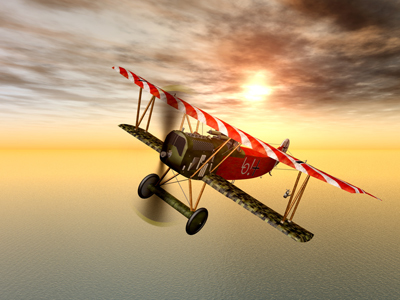

Air Warfare
Air Warfare tests your knowledge of aeroplanes.
The First World War saw many new weapons, from poison gas to tanks. Also new to the field of war was the aeroplane. First used for scouting and later for bombing and fighting, this new weapon would help to change the face of war. As American General Billy Mitchell said at the end of the war, "The day has passed when armies on the ground or navies on the sea can be the arbiter of a nation's destiny in war. The main power of defence and the power of initiative against an enemy has passed to the air."
Ready for more?
not all...
quizzers. Try to win a coveted spot on our Hall of Fame Page.






